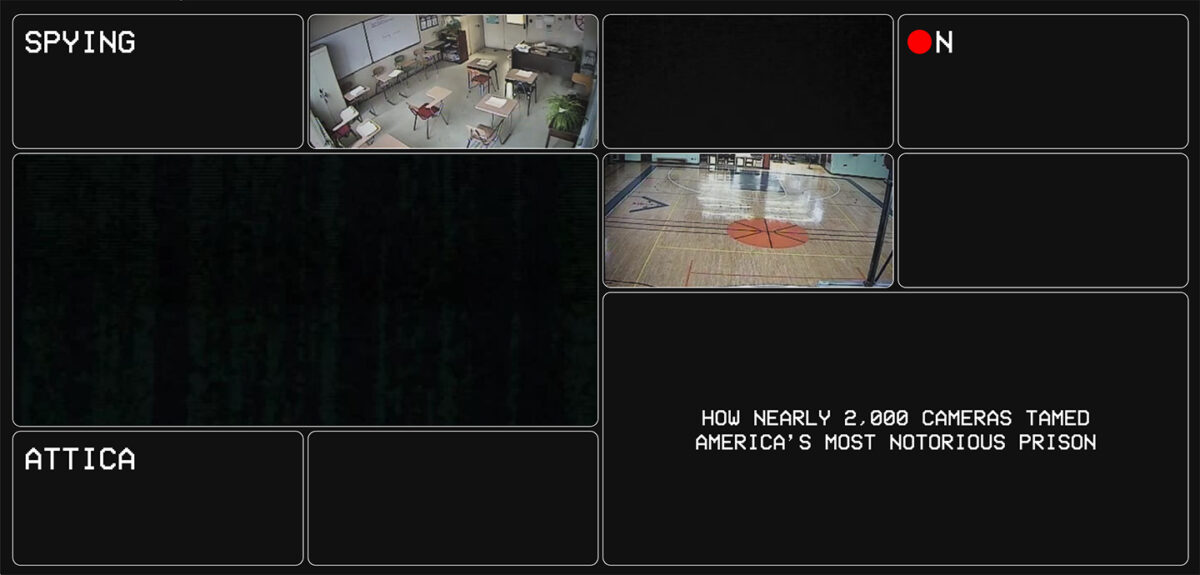In a story produced in partnership with The Marshall Project and Vice, John J. Lennon explains how surveillance cameras drastically reduced assault by correctional officers in Attica, one of America’s most notorious prisons.
EXCERPT
Among many New York State prisoners, Attica has long been considered the worst maximum security joint to serve time in. Near Buffalo, about 350 miles northwest of New York City, which is home for most prisoners, it’s a haul for families to visit. Seventy-six percent of the 2,026 prisoners are black or Hispanic; the approximately 600 COs are mostly white. The wall, the skies, the mood—they’re all gray, seemingly every day. Stories about setups and beatdown crews have long reverberated throughout the prison system. Over the years, the Correctional Association of New York has documented harrowing tales of harassment, pervasive racism, retaliation against prisoners filing grievances, excessive box time in disciplinary hearings, and more.
But that was before video surveillance came to Attica. By April 2015, cameras were being installed throughout the prison—as of January 2018, there were 1,875 cameras and 915 microphones, according to DOCCS. “The cameras are a valuable tool in the ongoing battle against drugs and contraband in the State’s prisons, as well as an asset in investigations into incidents involving both inmates and staff,” a DOCCS official said, adding that plans were underway for the installation of additional cameras at other state prison facilities.
Cameras at Attica have provided an unprecedented level of transparency and accountability for corrections officers. And they’ve been followed closely by a remarkable occurence: Official reports of assaults on staff have dropped drastically.
Read the full story at The Marshall Project.
